FITNESS

Our team reviews Chirp Wheel’s back pain relief system to see if it can soothe your aches in 2024.

27.5% of adults don’t get enough exercise. Learn about different kinds of physical activity and their benefits.

Life gets busy. Make sure exercise fits into your routine with our tips about timing, efficiency, and simple workouts.

Best Glutamine Supplement
Our 2024 guide details which glutamine supplement is the best for weight control, muscle recovery, and gut health.
Best Nitric Oxide Supplements
In our guide, learn which nitric oxide supplements offer the best pump, longest workout, and fastest recovery.
Best Pea Protein Powder
Learn about the costs and benefits of the six best pea protein powder options in 2024.
Best Lysine Supplements
Find out which of our top-rated lysine supplements could help you improve your health and wellness.
Best L-Citrulline Supplement
In our 2024 guide, discover our top L-citrulline supplement picks and choose the best one for you.
Best Beet Supplement
In our 2024 guide, discover how beet supplements boost energy, improve stamina, and enhance circulation.
Best Amino Acid Supplements: Top 5 of 2024
Find out which amino acid supplements can best help you gain muscle and move longer in our 2024 guide.
Best Muscle-Building Stack
A muscle-building stack can help you gain lean mass and protect your muscles. Here are the best in 2024.
Trenorol Review: Can Trenorol deliver a more toned body?
For our 2024 reviews, we test Crazy Bulk’s Trenorol pre-workout to see if it’s as effective as Trenbolone, yet safe.
Nerve Renew Reviews
Find out if Nerve Renew’s products can help you wipe out nerve pain before it starts in our 2024 reviews.
Orgain Reviews: A good value in supplements and meal replacements?
Are Orgain’s protein powders and meal replacements a cut above the competition? Our reviews share all the details.
A Guide to Interval Training
Learn about this efficient training style and how it could help boost your heart health, strength, and more.
Delayed Onset Muscle Soreness (DOMS): Pain After Exercise
Still sore days after a workout? Learn about delayed onset muscle soreness (DOMS) and how you can find relief.
Functional Fitness Training: Exercise for Everyday Life
Our guide covers functional fitness training basics, health and wellness benefits, and example exercises.GENERAL WELLNESS

In our 2024 guide, learn about the best incontinence underwear to keep men comfortable and confident.

Our 2024 guide picks out the top seven best CBD products to help ease the pain associated with arthritis.

Our testing team examined the best CBD honey sticks on the market to help you find your ideal sweet treat in 2024.

Hismile Reviews: Effective whitening for sensitive teeth?
Our reviews cover Hismile pricing, convenience, and efficacy of its products, including the viral purple serum.
Medterra CBD Reviews
In our 2024 MedTerra CBD reviews, discover if CBD can help you relax, get better sleep, and improve focus.
Common posture problems and how to fix them
Our 2024 guide covers common posture problems, ways to correct them, and how to prevent back and neck injuries.
Equilibria CBD Reviews
Find out if Equilibria CBD is as luxurious as it seems — and if anyone can use it — in our 2024 reviews.
CBD Guide: Everything you need to know
In our 2022 CBD guide, discover everything you need to know to get started – how to take it, what it treats, and what to expect.
Best CBD for Anxiety
In our 2024 expert guide, find out which companies offer the best CBD products for anxiety symptoms.
Because Market Review: Incontinence underwear delivered to your door
We tested Because Market incontinence products alongside many others. In our review, learn if it's the brand for you.
The Best CBD Oil of 2024
Our expert narrows the field of CBD oils considerably, focusing on the best and helping you understand how to choose.
How Working From Home Affects Health — For Better and For Worse
With remote work here to stay, are we healthier or not? Here’s the verdict, according to experts and scientific data.
Top 8 Health Benefits of Reading
Our guide reveals the many health benefits of reading, from increasing lifespan to preventing cognitive decline.
The Top 10 Health Benefits of Volunteering
Volunteering makes a huge positive difference in the world, but did you know it’s also good for your health?
The Impacts of Personal Hygiene on Your Health
In addition to preventing diseases, good personal hygiene can help in social and professional situations and impact your self-esteem and mental health.
Back Pain Statistics and the Importance of Good Posture
Learn about back pain statistics and the importance of maintaining good posture to prevent and treat pain.
Migraine: What You Need to Know
Migraine is more than a headache. Learn everything you need to know to recognize the signs of migraine and seek effective treatment.
Screen Time: Advice for Protecting Health
Too much screen time can interfere with every aspect of your health. We’ll give you advice to protect yourself.
Health Benefits of a Vacation with Friends
Learn how taking time off on a vacation with your friends can stave off isolation and improve your health.
Health Benefits of Art and Music
Discover how art and music therapy can improve your health, including help with anxiety, sleep, and cognition.
How to Quit Smoking
Discover how to manage cravings and withdrawals and avoid weight gain when you quit smoking.
Top 5 Benefits of Building Healthy Habits
Habits can make or break a healthy daily routine. Check out our top 5 tips for building healthy habits.
MDHearingAid Review: Are these affordable hearing aids a great choice?
MDHearingAid makes and sells hearing aids at prices much lower than competitors. We tested them - find out if they're ideal for you.HAIR & HAIRLOSS

Based on price, efficacy, comfort, and more, we help you find the best laser cap for your hair loss in 2024.

What’s your ideal hair loss treatment? We tested products, read studies, and assessed value for our 2024 guide.

In this Hims hair review, we tell you everything about the company’s expanded line of shampoo and conditioner.

Could your style choices lead to hair loss?
Dermatologists break down whether hats, hairstyles, and hair products can cause hair loss.
Could your diet be causing hair loss?
Is your hair loss due to your diet? We spoke with experts on how nutrition can affect your hair health.
Minoxidil Before and After
These before and after photos show how minoxidil can stop hair loss and regrow hair over time.
Nutrafol Reviews: How effective are Nutrafol hair supplements?
We tested and evaluated Nutrafol’s hair growth supplements in 2024 — find out if it might stop your hair loss.
Kiierr Laser Cap Reviews: Effectiveness at a competitive price
Our testing team compares Kiierr laser caps for hair loss to the top contenders on the market in 2024.
HairMax Review: Do HairMax’s laser hair regrowth devices work?
Do HairMax laser products work? Our 2024 review explores their effectiveness, cost, return policy, and more.
ScalpMED Reviews: Does this hair loss treatment work?
If hair regrowth is your goal, our 2024 ScalpMED reviews give you all the details of its hair loss treatments.
Hair Club Reviews: Your choice for hair restoration, regrowth, and replacement?
Our Hair Club reviews will tell you whether it can get you to your goals in hair regrowth, restoration, or replacement.
Capillus Review: Do these laser caps work?
Our team tests and reviews the Capillus laser cap to see if it’s a viable solution for hair loss in 2024.
Finasteride Before and After
Before and after finasteride photos show the hair regrowth progress men experience at different stages.
Nanoxidil vs. Minoxidil: What’s the difference?
Nanoxidil vs minoxidil may become a major rivalry in hair loss treatments. Learn all the important differences.
Perception of Chrome Domes in the U.S.
We survey more than 1,000 Americans to find out how they view men who are going bald.MENTAL HEALTH

Our expert guide provides valuable insights and information about women’s mental health and how and where to seek help.

Internet Addiction can result in real-life consequences; our guide covers causes, symptoms, and effects.

Learn to identify the signs of behavioral addiction and find out how and when to seek professional help.

Mental Health Resources for Those Who Are Grieving
Learn about the types and symptoms of grief, as well as how to cope with loss and support grieving loved ones.
Who Takes Mental Health Days, and What Are the Common Triggers?
Perceptions about taking mental health days from work are changing. We surveyed people to find out the details.
Resources for Victims of Human Trafficking
We put together statistics and resources to help identify and support human and sex trafficking victims.
Top 7 Tips on Finding the Best BetterHelp Therapist
From extensive testing and a therapist’s experience, here are 7 tips you can use to find the best BetterHelp therapist.
How to Avoid Stress When Flying This Summer
We analyzed the top 10 airlines in the U.S. to help you avoid travel stressors on your summer getaway.
How Diet Impacts Your Mental Health
Learn how your diet and mental health are linked, from eating disorders to the gut-brain connection and more.
How Different Forms of Debt Affect Our Mental Health: Study
We surveyed 1,063 Americans to learn how different forms of debt (like student loans) affect our mental health.
What is Grief: Symptoms and Coping Strategies
Our guide to grief explores symptoms, common myths, and coping strategies.
What Are the Summer Blues? We Asked Experts to Weigh In.
Psychologists weigh in on the summer blues, what causes them, and what you can do if you’re suffering.
Resources for Teens in Recovery
Our guide provides resources for teens in recovery, including extracurriculars, hobbies, and activities.
Domestic Abuse: Understanding Emotional Abuse and Violence in Relationships
Our guide covers how to recognize the signs of emotional or physical abuse in a relationship and find help.
Preventing Suicide: Facts and Statistics
Despite alarming statistics, suicide is preventable. Our guide covers suicide, who it affects, and how to help.
How to Deal with Stress: 17 Expert Ways to Cope
Find out how to cope with stress using expert advice about meditation, exercise, and more.
How Depression Affects Different Groups
Depression presents differently in women, men, teens, and older adults; our guide can help you learn the risks and spot the signs.
Resource Guide for Male Survivors of Abuse, Sexual Assault, and Trauma
Despite popular misconceptions, males often experience physical, emotional, and sexual abuse. It’s crucial to understand the signs of male abuse and how it can affect you, and then find support.
The Pursuit of Happiness: How to Cultivate Joy in Your Life
Our guide highlights the importance of happiness and offers tips to help you foster it in your daily life.
Mental Illness and Violence
Learn about the connections between mental illness and violence, how to prevent violence, and where to seek help.
Mental Health Benefits of Exercise
In our expert guide, find out how exercise can boost mental health, enhancing mood and self-confidence.
13 Cognitive Benefits Kids Get from Playing Video Games
Video games aren’t merely a lot of fun. It turns out they also exercise your mind and lead to cognitive improvement.
Trauma Facts and Resources
Discover how trauma impacts your life, how to cope with it, and where to seek help and healing.
Mental Health Resources for Teens
Adolescence is hard enough. We’ve put together mental health resources to support you or the teens in your life.
Resources for Victims of Child Sexual Abuse and Their Families
As we provide resources for children and their families, we also help you spot the signs of child sexual assault and report it.
Addiction in teenagers
Find out how addiction affects teenagers’ brain development and how you can help prevent and treat substance abuse.
Addiction in Women
Learn some facts and statistics about addiction in women including definitions and treatment options.
Mental Health Resources for the Latinx Community
Struggling with your mental health? You’re not alone. Check out our resources for the Latinx community guide.
Mental Health Resources for the BIPOC Community
Find virtual guides, apps, and other mental health resources for the BIPOC community.
Expressing Gratitude Can Benefit Your Health. Here’s How
Help those around you to help yourself feel better. Here are 10 ways to practice gratitude in your daily life.
9 Signs You Should See a Therapist and Why You Would Benefit
Life is hard, but no matter the problem there are ways to get help. Here are nine major benefits of therapy
Mental Health Resources for the LGBTQ+ Community
We share trusted resources for LGBTQ+ people seeking ongoing support, online therapy, and emergency help in a crisis.
Mental Health: Separating Myth from Fact
We unpack the eight biggest myths about mental health, debunking them with facts about mental illness instead.
Suicide Facts and Resources
Learn about the scope of the problem, populations at greatest risk, and resources available to help those in need.
The Duplicity of Denial
Denial is a normal psychological coping mechanism. Learn how it can help us as much as it can hurt us.
Seasonal Affective Disorder: What It Is and How It’s Treated
We outline causes, symptoms, and treatments for seasonal affective disorder to help you beat the winter blues.
How Therapy Can Positively Impact Your Physical Health
Cognitive behavioral therapy (CBT) can do more than help you cope with mental health issues; you may experience improved mood, reduced risk of heart disease, a stronger immune system, and even a greater ability to exercise and engage in physical activities that further benefit your overall health.
What Does It Mean To Be Nonbinary?
Learn what nonbinary gender identities are and how to talk about and support the nonbinary people in your life.
The Relationship Between Body Image and Self-Esteem
Feeling good about your body is an important part of having healthy self-esteem. Learn how body image affects self-esteem, why it's so hard to overcome negative feelings, and what you can do to boost your self-esteem today.
Treating Depression and Anxiety with Yoga
Could a regular yoga routine curb your symptoms of anxiety and depression? Here’s what the science indicates.
A guide to Trichotillomania
Learn about the causes, treatment, and prognosis of the common hair-pulling disorder trichotillomania.
Trauma Bonding: What You Need to Know
In our 2023 expert guide, learn all about trauma bonding, including symptoms and therapy options.
Benefits of Animal Assisted Therapy
Petting a dog can actually improve your health. Learn more about what animal assisted therapy can do for you.
10 Anxiety Symptoms You Might Not Know About
In our expert guide, discover the little-known anxiety symptoms that might be impacting your day-to-day life.
Mental Health Benefits of Having a Pet Dog
Caring for a dog improves your quality of life and theirs. We’ll explore the mental health benefits.
What Should I Do if I Have Insomnia?
A licensed therapist walks you through tips and tricks to try if insomnia keeps you from a good night’s sleep.
When Is It the Right Time to Try a Different Therapist?
Learn how to recognize the red flags and identify when it’s time to move on in a therapeutic relationship.
How Meditation Can Improve Your Mental Health
In our expert guide, discover how meditation can lead to better sleep, focus, and overall mental health.
How Therapy Can Help You Better Manage Stress
In this expert guide, learn how therapy can help you manage stress with mindfulness, boundaries, and healthy habits.
Stress Management Strategies
In our guide, discover stress management strategies to help you improve your mental and physical well-being.NUTRITION

Find out which superfoods Dr. Gundry suggests eating in 2024 to maintain a lectin-free diet.

If you’re trying to lose weight and keep it off, check out our 2024 reviews of Found’s weight loss program.

In our 2024 guide, find out which colon cleansers best stimulate bowel movements and promote regularity.

Best 3 Day Cleanse: Comparing the top detox cleanses
In our expert guide, find out which 3 day cleanse will be best for detoxing, weight loss, and regularity.
Diabetes Statistics in the United States
Learn the facts and statistics about diabetes in the United States, including how to prevent and manage type 2 diabetes.
DoFasting Reviews: Will it help you lose weight?
Our 2024 DoFasting reviews help you decide whether the fasting app and supplements will help you lose weight.
Huel vs Soylent: Which company makes the best meal replacements?
Our experts explore a meal replacement rivalry – Huel vs Soylent – to see which one reigns supreme in 2024.InsideTracker Review: Evaluating its health tests and insights
Our 2024 InsideTracker expert review explores the pros, cons, and details about its lab and home health tests.
RYZE Mushroom Coffee Review
Is RYZE Mushroom Coffee a worthwhile and tasty coffee replacement? Our 2024 review details the pros and cons.
Huel Review
Our team of experts tries Huel meal replacements to see how they taste and if they can fill you up in 2024.
Soylent Review: Convenient Meal Replacements?
Our 2024 review dives into Soylent’s meal replacements. Find out if the pricing, nutrition, and taste are right for you.
Lowering Salt in Your Diet
Learn about different types of salt, how much is too much, and ways you can reduce your intake.
Maintaining a Healthy Weight During the Holidays: Survey
We surveyed 545 people to understand how and why more than 90% of people gain weight over the holidays.
Calcium: Benefits and Sources
Our guide discusses what calcium is, what it does for you, the best sources, and how much you really need.
How Much Water Should You Drink?
Proper hydration is essential. Learn about how much water you need along with common signs of dehydration.
How Much Protein Do You Need?
Find out what protein does for your body, where it can be found, and how much you need to consume.
Healthy Eating for Older Adults
Our guide to healthy eating for older adults explores how to select foods as your nutrient needs change.
Glycemic Index for More Than 60 Common Foods
Find out whether your dietary staples are likely to cause weight loss or gain with our glycemic index chart.
The Nutritional Value of Beans: A Versatile Superfood
Pulses (beans, peas, and lentils) are superfoods linked to longevity and a lower risk of chronic disease.
The Power of Plants: Benefits of Fruits, Vegetables, and Whole Grains
For an energy-boosting and nutritious diet, add fruits, vegetables, and whole grains to your meals.
What Are the Healthiest Ways to Eat Eggs?
We’ve compiled recipes and tips about the healthiest ways to eat eggs to help you get essential nutrients.
Omega-3 Content in Seafood Products
Our team reveals the levels of omega-3 fatty acids in various seafood products so you can choose the best.
How Diet and Exercise Affect the Risk of Cancer
Learn how your diet and exercise choices affect the likelihood you’ll develop a few specific kinds of cancer.
The Benefits of Going Organic
Eating organic and growing your own food can benefit your health and the environment. We’ll help you get started.
Managing Malnutrition in Older Populations
Seniors are at especially high risk of developing malnutrition. We provide information to help you prevent it.
Eating Disorders
Read our guide to discover eating disorder causes, symptoms, resources, and treatment options.
Food Allergy Facts and Statistics
An in-depth collection of vital facts and statistics about food allergies and those who suffer from them.
Pros and Cons of Frozen Food
Learn about the pros, cons, health benefits, and preparation of frozen food, meals, and produce.
What is a Mediterranean Diet?
We break down the widely recommended Mediterranean diet and explain why it’s so famously healthy.
America’s Eating Habits Throughout the Pandemic
We analyzed the foods purchased and eaten in the U.S. to see how the pandemic changed our eating habits.
10 Mighty Foods to Boost Your Heart Health
Changing your diet can alter your risk of heart disease, and these 10 foods may boost your heart health most.
Ideas for a Healthy and Creative Breakfast
We gathered facts and recipes to help you bolster your energy through healthy and creative breakfast ideas.
10 Easy Ways to Boost Your Metabolism
When weight loss gets hard, we’ve got 10 easy ways to boost your metabolism and get you back on track.
Bone Broth Benefits
Discover the many benefits of bone broth, including better sleep, boosted energy, and improved weight management.
What does the average American diet look like?
Do American perceptions of eating habits match national guidelines? We surveyed 850 people to find out.
Health Benefits of Vegan Diets
Find out 45 benefits of a vegan diet to help save the planet, your wallet, and your health in this guide.
Vitamin D Deficiency and How to Avoid It
Find out how to get enough vitamin D to boost immunity, enhance bone health, and improve overall wellness.
Top 10 Health Benefits of Coffee
Evidence suggests that coffee can help improve your health! Here are the top 10 health benefits.
Flavonoids: Are there significant health benefits to drinking black and green tea?
Find out whether the flavonoids in green and black teas make them a healthy choice for your heart and in general.RELATIONSHIPS

In our comprehensive guide, we compare the best STD dating sites so you can choose in 2024.

In our 2024 guide, discover which Jewish dating sites will best help you find the perfect match.

Our 2023 Positive Singles review covers all the pros and cons so you can decide if this is the STD dating site for you.

The Best Herpes Dating Sites
In our expert guide, find out which sites are the best for dating while living with herpes.
A Parents’ Guide to Protecting Kids on Social Media
Social media is both a useful tool and a danger for kids. Find out how to help kids harness the benefits and stay safe.
Bullying Prevention Resources
No matter who’s being bullied, you can do something to stop it. We’ve gathered prevention resources to help.
How to talk so your kids will listen: 20 tips
Assertive communication with your kids can be hard. We’ve gathered 20 tips to help you talk so they’ll listen.
Helping Your Child Through a Divorce
We offer tips and advice on helping you and your child cope with a divorce in this expert guide.
Would You Rather: Relationships Edition
We surveyed 1,001 people in romantic relationships to learn what they would rather give up for their partner.
The Dangers of Drowning: How to Protect Your Children
A guide to reducing the risk of children drowning in pools, hot tubs, oceans, lakes, and bathtubs.
How to Get Over a Bad Breakup
We asked a licensed marriage and family therapist how to get over a breakup that’s left you at rock bottom.
Resources for Family Caregivers
Discover financial, professional, and community resources for family caregivers.
How to Talk to Your Partner About ED
A licensed marriage and family therapist advises you how to broach a difficult subject and overcome ED as a couple.
Is Your Relationship as Healthy as You Think?
Our survey of 686 people reveals how healthy they think their relationship is, as well as how accurate they are.
What Happens During the Stages of Puberty?
Find out what physical and emotional changes to expect in your child or yourself during each stage of puberty.
How to Handle Political Disagreements
If you and your loved ones quarrel over politics – a very common source of friction – here are some tips from a therapist.
How to Talk to Your Partner About Premature Ejaculation
A licensed therapist walks you through best practices when raising the subject of premature ejaculation.
Partner Isn't Interested in Relationship Counseling? Here's What You Can Do
Couples therapy can save a relationship, but what can you do if your partner won’t go? One of our resident therapists weighs in.
How Relationship Counseling Works
In this guide, find out how counseling can benefit your relationship’s communication, boundaries, trust, and more.
The Importance of Family Time
Find out how making time for family activities improves mental health. We’ll share tips to fit it into your busy schedule.SEXUAL HEALTH

Claim your BlueChew FREE trial using our exclusive coupon code. Learn how to get your BlueChew Free Sample.

Is BlueChew safe? Is it worth the money? Our medical experts review it based on testing, research, and interviews.

Find the best treatment for erectile dysfunction and which ones to avoid. Plus learn how to get a FREE SAMPLE!
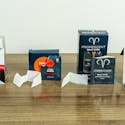
The Best PE Wipes
Our expert guide compares the best premature ejaculation wipes to help you tackle PE once and for all in 2024.
The Best Penis Sleeve
Whether to add some size or as a quick fix for men with ED, penis sleeves offer versatility and performance. But which one’s right for you?
BlueChew vs Roman: Where should you get ED meds?
BlueChew and Roman offer similar medications delivered in different ways. We’ll show you which is best for you.
The Phoenix ED Device Reviews
Our 2024 expert review looks at the efficacy, cost, and safety of the Phoenix at-home shockwave device for ED.
The Best and Most Realistic Sex Dolls in 2024
Our team explores the best sex dolls available to find out which ones are worth your money in 2024.
Rugiet Reviews: Is Rugiet Ready the ED solution for you?
Our team tests and reviews Rugiet so you can see if their customizable medley of three ED meds is worth a try.
BlueChew Before and After Pictures
See and learn! This guide will show and tell you everything you need to know about how BlueChew works.
Best Penis Extender in 2024
Which Penis Extenders should you avoid? Do they really work? This guide will tell you everything you need to know!
Quick Extender Pro Reviews: Does it work for penis enlargement?
We put Quick Extender Pro to the test — our 2024 reviews give the details about prices, results, privacy, and more.
Best Penis Pump
Our testing team puts the best penis pumps of 2024 to the test so you can find the right one for your needs.
Hims ED Review: Are Hims' ED products and services right for you?
Our experts review Hims and tell you everything you need to know about Hims Erectile Dysfunction services and ED products, as well as pricing.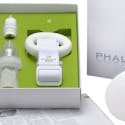
Phallosan Forte Reviews: Will it enlarge your penis?
Our 2024 reviews tell you if Phallosan Forte makes your penis bigger. Learn about cost, comfort, warranty, and more.
Guide to Finding the Best Delay Spray for Men
Looking for the best delay spray to last longer during sex? Read our 2024 guide to premature ejaculation sprays.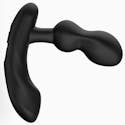
Best Prostate Massager
Our testing team reviews the best prostate massagers of 2024 so you can find the right one for your needs.
Promescent Review: Does Promescent Spray Work?
Does Promescent Delay Spray help men last longer during sex? Is it safe and affordable? Read our 2024 review!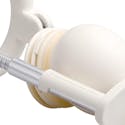
PeniMaster Pro Reviews: Is it effective for penis enlargement?
Our 2024 reviews tell you if PeniMaster Pro can make your penis bigger without discomfort and for a good price.
A College Student's Guide to Sexual Health
This 2024 guide to safe sex offers priceless tips and resources to thrive on a sex-positive college campus.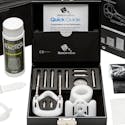
SizeGenetics Reviews: Will it really work for penis enlargement?
Will SizeGenetics make your penis bigger? Is it worth the cost? Is it comfortable? Our 2024 reviews tell all.
Roman Swipes Review
In our 2024 review of Roman Swipes, our testing team reveals how well these delay products work against PE.
PT 141: Is this novel ED treatment safe?
Our analysis of PT 141 cost, effectiveness, and safety will help you decide whether to pursue this ED treatment.
How Much Do We Know About Testosterone?
We survey more than 1,000 men to find out how much they know about testosterone and its role in sexual health.SKINCARE

Our 2024 guide will help you find the best whitening cream for hyperpigmentation from melasma, acne, and more.

Our 2024 expert guide to the best anti-aging creams for men examines cost, safety, effectiveness, and more.

We tested and evaluated Carpe — our 2024 reviews help you decide if this antiperspirant can stop your sweating.

Ulike Reviews
Ulike makes IPL devices for at-home hair removal. Our review explores how they work and whether they’re right for you.
The Best IPL Hair Removal
Our guide to the best IPL devices for hair removal simplifies the science of these tools to aid your choice.
Is a face cleanser better than bar soap?
Dermatologists help break down the typical differences between a good face cleanser and bar soap.
Lumi Reviews
RoseSkinCo’s Lumi is a handheld IPL device for at-home hair removal. We tested it to see if it’s right for you.
Nood Reviews
Nood’s Flasher 2.0 is a handheld IPL device for at-home hair removal without razors, wax, lasers, or creams.
Meladerm Reviews: Can this cream brighten and clear up your skin?
Our 2024 review covers if Meladerm can treat hyperpigmentation, lighten and clear up skin, help acne, and more.SLEEP

Our guide helps you break down all the pros, cons, and details to help you find the best CBD for sleep in 2024.

We investigated Good Morning Snore Solution (GMSS) to see if it delivers on its promises as a snoring remedy

Learn how screen time and blue light before bed can impact our circadian rhythms, sleep, and health.

The Importance of Sleep
Our guide reveals facts and statistics about sleep, a vital process for maintaining physical and mental health.
Getting a Good Night’s Sleep: Basic Strategies Including What to Eat and How to Relax
Having a hard time sleeping at night? Check out our five basic strategies to finally get a good night’s sleep.
How Down syndrome affects sleep
Learn about the causes, statistics, symptoms, and strategies of comorbid sleep disorders in Down syndrome.
How Autism Spectrum Disorder (ASD) Affects Sleep
Discover information and resources that cover how autism spectrum disorder (ASD) impacts sleep.
Do You Really Need 7-8 Hours of Sleep Every Night?
How much sleep you need depends on your age. We share the details, plus the 10 top health benefits of good sleep.SELF CARE FOR HER

We detail the most comfortable, reliable, and affordable women's incontinence underwear options of 2024.

Our guide tells you everything about Latisse: what it is, where to get it, current deals, and discount codes.

Our testing team reveals their top 9 picks for the best dildoes in 2024. Discover the top brands and product lines.

Hers Hair Review: All about Hers shampoos, conditioners, hair loss treatments, and more
With our 2024 expert review, find out if Hers hair products are effective, high-quality, and sold at a good price.
Maintaining a Healthy Weight During Pregnancy
Our guide on healthy pregnancy weight covers guidelines, calorie needs, nutrition, exercise, and body image.
Understanding Stress During Pregnancy
We’ll help you understand how daily and chronic stress can impact health during pregnancy and how to cope.
This Is What Menstruation Looks Like Around the World
We commissioned ten artists from around the world to show us what menstruation looks like in their country.








